There are few things that have the power to dictate our mood, confidence, or self-worth more than the weighing scale.
Those that have never struggled with fitness likely have an innocuous relationship with the scale. It’s simply a piece of equipment that reports one’s weight.
But for those who have struggled with their body image, the scale represents much more. It’s a deity to which they pay homage by enduring great pains in hopes of a favorable number.
On some weeks, the scale loves you back.
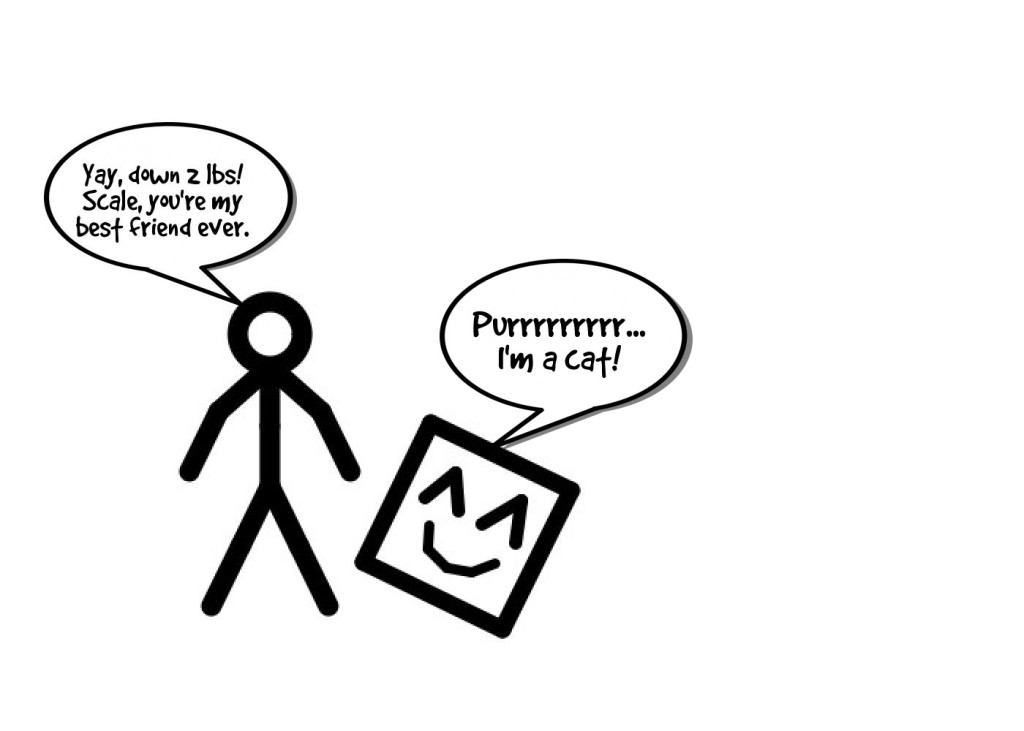 Now, this isn’t such a bad thing. The scale can be a form of feedback that lets you know that you’re on the right track and allows you to build a positive feedback loop.
Now, this isn’t such a bad thing. The scale can be a form of feedback that lets you know that you’re on the right track and allows you to build a positive feedback loop.
But no matter much you try to appease the scale – even with a perfect diet – natural weight fluctuations inevitably set in and the scale will output an unfavorable number.
This is what it feels like when the inevitable happens.
The image above seems harsh, but it’s not an exaggeration.
A person’s relationship with the scale can be downright abusive to the point of bringing people to tears. (Yes, I have witnessed it. A few times, actually.)
If you’re wondering how the scale can hold so much power over many of us, it’s because this isn’t just any household item.
Our imaginations transform the scale into a very unique creature, one that manifests the relationship between you and your body.
Like a shark that smells blood, the scale senses any and all of your body’s insecurities and feeds off of them. We’re not just talking about overweight people here.
Even people who see themselves as “too skinny” can be terrorized by the scale.
The Scale’s Source of Power
Before we dive into exactly how to fix our relationship with the scale, it’s helpful to know why the scale wields more power over us than Roose Bolton over the Starks during a wedding. (Obligatory Game of Thrones reference)
1. We think we are our weight. (And mistakes. And failures.)
Think about the statement “I am fat” for a second.
In this sentence, a person is literally defining “fat” as a characteristic akin to being male, female, Asian, black, or white – and all the while knowing that one’s level of “fatness” is malleable.
Unfortunately, there’s a cultural notion that being fat is a character flaw, much like laziness or gluttony.
This is actually an example of a much broader societal theme where mistakes and failures are inextricably linked to your identity: Failing means that you are a failure and making mistakes makes you a bad person.
By coupling people with their failures, weights, mistakes, etc., we are subtly instilling a “fixed mindset” into individuals.
People with a fixed mindset believe that one’s strengths, weaknesses, failures, and successes are relatively immutable traits; you either have them or you don’t. They don’t differentiate between outcomes – such as failures – and themselves. They avoid failure and improvement.
And remember how the scale feeds off your insecurities?
When you have a fixed mindset, the scale can tell.
Contrast this with someone who has a “growth mindset.” They believe that through education and hard work, things can be improved. They embrace challenge, criticism, and set out to get better at different skills.
Someone with a growth mindset knows that you are not your mistakes. You are not your failures. To think so would be silly, since everyone fails or makes mistakes at some point.
The irony here is that those with fixed mindsets tend to be harder on themselves. This makes it more difficult to think about their weight (and fitness in general) objectively, because they feel immense shame and guilt from their failures. Instead, what they should do is show themselves some self-compassion.
On the other hand, someone with a growth mindset can assess failure much more objectively, thereby understanding what needs to be done in order to improve.
The fact of the matter is that you are not your mistakes.
2. Metrics are powerful.
Numbers, even those that do not tie into your sense of self, can have a profound impact on your mood.
Consider how many people are greatly influenced by the stock market, fantasy sports, or World Cup scores. Or perhaps there is a number at work that determines your job performance.
Important metrics strongly impact our feelings about ourselves and the world.
And the examples that I listed above are nothing compared to your ideal weight – a number that you’ve probably been focusing on (or possibly even obsessing about) for a long time now.
Anyone who has ever worked for a company that tracks key metrics absolutely knows that employee morale rises and falls with these numbers. For example, if you’re tracking app downloads and sharing it with your company, then a spike in signups leads to high motivation, whereas a slump may create a sense of listlessness.
It’s not hard to see how this ties into your weight. The difference between losing two pounds or gaining two pounds may be night and day to your mood, even if these results are completely within your weight’s normal fluctuation.
Why the Scale is Flawed
Ok, so we know that people heavily tie their weight to their sense of self and that numbers are powerful. Let’s see why this isn’t a good idea for many people before discussing what to do instead.
Weight loss as a proxy for fat loss
When people say that they want to lose weight, what they really mean is that they want to lose fat.
“But Dick, that’s a nitpick. Fat loss is a pretty good proxy for weight loss,” you might retort.
But is it?
Let’s consider this image, courtesy of superstar trainer Borge Fagerli.
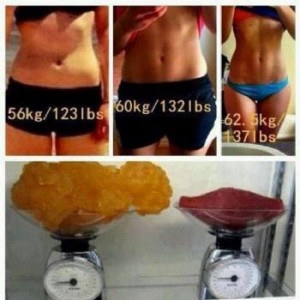
That’s the same person in all three pictures, 14 lbs heavier by the end. This image is a quick way of demonstrating, by counter example, that weight loss isn’t always the best proxy for fat loss. In the picture above, the client likely replaced a lot of fat with a whole lot of muscle, leading to a net weight increase.
Got it? Good. Eh, actually here’s one last one for safe measure.
This is a client of mine who lost 10 inches off of her waist while staying the same weight.
Still, the images above were taken months, if not years, apart. What if the scale is good at measuring short term progress? Is there a better proxy for fat loss?
The answers to these two questions are intertwined, so bear with me while I explain.
A better proxy for fat loss – waist measurements
In the two images above, weight either stayed the same or increased, while the clients’ waist measurements decreased dramatically, reflecting the true fat loss that occurred.
In fact, waist measurements tend to be more stable despite natural weight fluctuations (I touch upon this here.) and may provide more consistent indication around fat loss.
Now there are some interesting patterns between weight loss and waist measurements that I see over and over again.
One of these is that, as a rule of thumb, losing 1 lb in the short term is equivalent to losing approximately 0.20-0.25 inches from your waist. That means that for every inch off of your waist measurements, roughly 4-5 lbs of fat is lost.
What’s really interesting about this observation is that I’ve seen it across many different training cohorts – men, women, trained individuals, untrained individuals.
This graph shows the correlation between average decreases in waist vs. waist measurements in 58 trained individuals from my “Your Ultimate Transformation” group, grouped by gender.
The slopes of the fitted trend lines roughly reflect the weight-loss-to-inches-lost relationship. Men lose 0.25 inches and women lose 0.20 inches.
In another analysis, I looked at mostly untrained individuals across from my “Weight Loss Made Simple” group and their average decreases in waist vs. waist measurements in trained individuals, grouped by gender.
Results were within a similar range. Men lost an average of 0.27 inches from their waist for each lb lost, whereas women lost 0.19 inches.
If the 0.20-0.25 inch/lb rule-of-thumb is correct, then we should be able to see this in individual clients as well when plotting their weight vs. waist measurements. A quick analysis of individual client data seems to corroborate this claim.
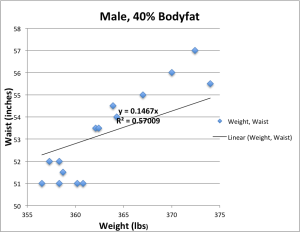
For the most part, individual data corroborates the analysis above. Clients lose 0.20-0.25 lbs for every inch that they lose from their waist. The lone counter example is a clear outlier who weighed mid 300’s at 40%.
Of course, one can always claim that I’m “cherry picking” data to fit my analysis, so I highly suggest that you try to run these yourself with your own measurements. You’ll find that 4-5 lbs is a consistent, reliable approximation for how much weight is lost when a client decreases their waist measurements by 1″.
Why weight loss misses the mark
We’ve already established that your weight can greatly influence your self-esteem, and normal fluctuations can make you feel like shit. It’s obvious why this is problematic, but it’s not even the biggest reason that weight loss misses the mark.
Take a look at the following graph.
This is the average weekly decrease in weight and waist measurements of my most recent clients (minimum 3 data points), a total of 82 clients.
Let’s assume that all of these clients are equally emotionally attached to their weight. Who do you think is most susceptible to being terrorized by scale?
The data points in the rectangular area above represent clients who should be losing 1 lb/week or more, as predicted by their decrease in waist measurements. Yet, their average weight loss is less than 0.5 lbs/week.
For whatever reason, this subset’s average weight loss is a poor reflection of fat loss.
There’s something else noticeable about the data points in that region – They are overwhelmingly female as a proportion of the entire dataset (38% vs. 14%, p=0.017).
Whether gender universally plays a role in those who underperform or something specific to the female cohort that I train is anyone’s guess. I suspect it’s the former. Anecdotally, when talking to other coaches, it seems like women get the short end of the stick (as with many other things in fitness, sadly) when using weight loss as a proxy for fat loss.
The major point – You are not a failure
There are certain individuals who are susceptible to being emotionally abused by the scale. For them, relying on their weight is analogous to entering an abusive relationship. It’s an automatic death sentence to their fitness motivation and self-esteem.
No matter how hard these individuals try to please the scale, it will not love them back.
But they think things might change. It might seem like the scale will give them the affection that they have always craved. Abusive relationships always seem like this – such is their nature.
As to why you’re in this subset of unlucky individuals, I’m not completely sure. But the “why” doesn’t really matter in the large scheme of things. If you are one of these people, the more important point is this:
It has nothing to do with you, your ability to get fit, or any sort of failure on your part.
It’s a simple matter of probability. If you walk into a random room full of people, some proportion will inevitably be abused by the scale’s lying.
Fixing the Relationship
The simplest, yet hardest, part is identifying that you’re in an abusive relationship with the scale.
This is easier said than done. After all, there is a reason that people stay in abusive relationships. Hopefully the information above is enough to help people objectively assess how the scale makes them feel. After that, you can then begin to heal.
In order for that to happen, I’d like to introduce you to “Mr. Nice Guy” – the tape measure.
If the weighing scale is the emotionally abusive, womanizing bad boy that women want but shouldn’t have, then the tape measure is a caring, mature, gentleman who just happens to love wrapping his arms around your waist.
Remember that for every inch off of your waist, you’ve probably lost somewhere in the neighborhood of 4-5 lbs of fat. If you have a horrible relationship with the scale, ditch it cold turkey and swap it out for waist measurements.
Option 1 – Completely ditch the scale
Those with the worst relationships with their weight will likely do best completely ditching the scale.
Instead of focusing on a “goal weight,” you’ll probably want to get your waist down to roughly 24-28 inches for women and 28-32 inches for men. Take a measurement once/week and aim to lose half an inch from your waist every 2-3 weeks.
These measurements will be more stable and less tied to your sense of self.
Option 2 – Build a story using different data points
If you have a tolerable relationship with the scale, then it will be easier to learn to objectively assess your weight without emotion.
If this is the case, then you can use weight and waist measurements in conjunction with each other, using your weight as a primary metric and waist measurements as a secondary metric by following the following rules.
If your weight decreases by the amount projected in your caloric deficit –
Your progress is fine. There’s no need to further interpret your waist measurements, so leave that analysis alone.
If your weight does not decrease by this amount –
Take your waist measurements. Convert your projected weight loss into the conservative waist measurement equivalent by multiplying that number by 0.2. You should see that decrease from your waist.
In the end, the goal is to see the scale like the image below. It is neither good, nor bad, but simply a household gadget.
That’s because you are not the number that appears on it. Nor are you your mistakes or failures. You’re worth far more than the number on a device.
[standout-css3-button href=”http://dicktalens.com/private-coaching-with-dick/”]Need help getting on the right path? Train with me[/standout-css3-button]
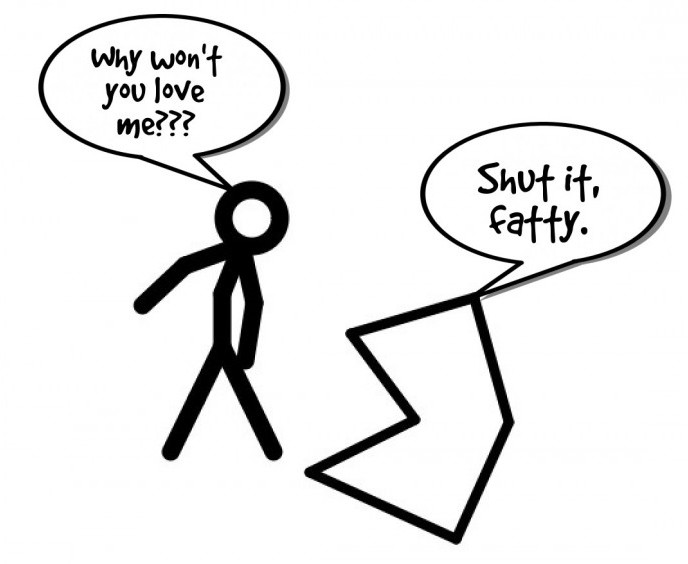
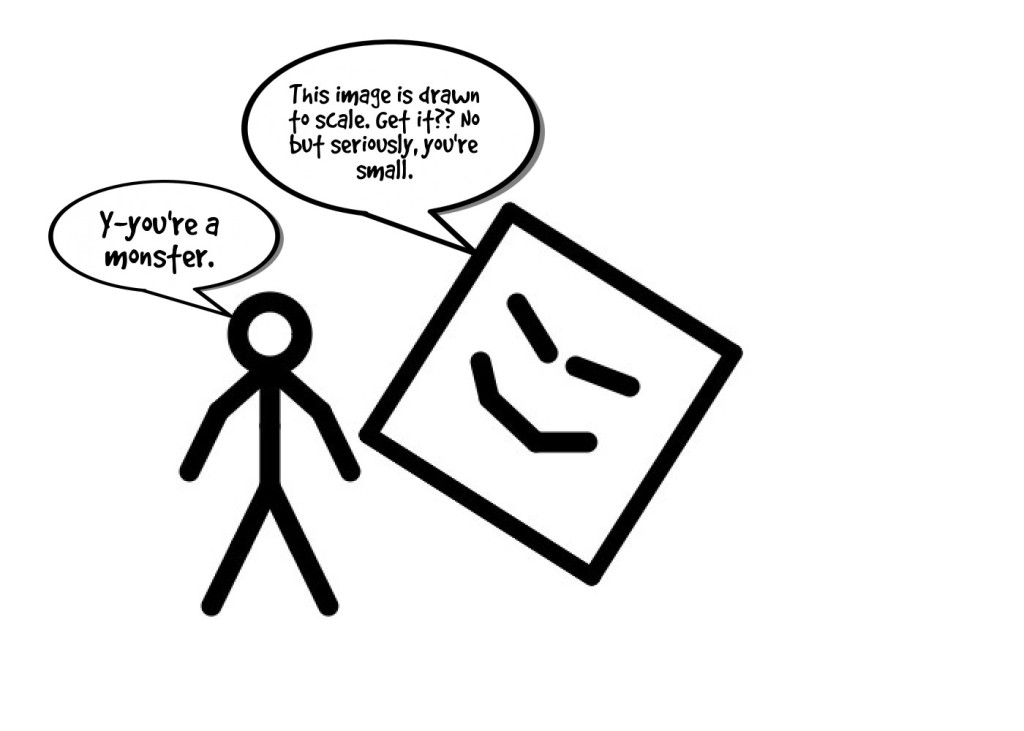

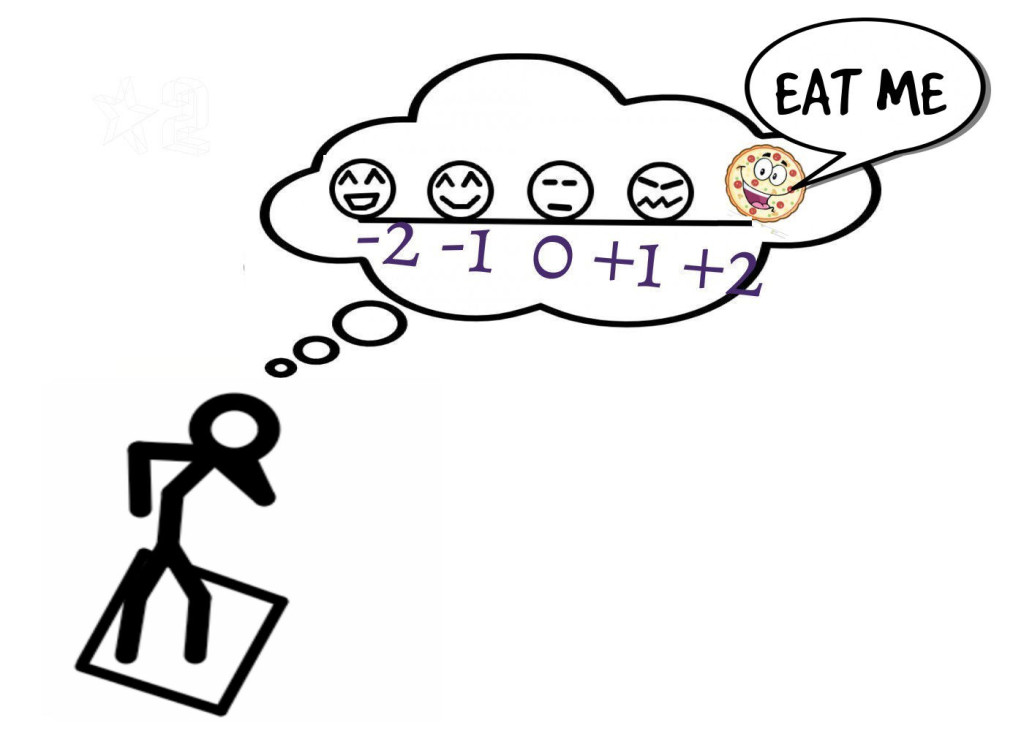

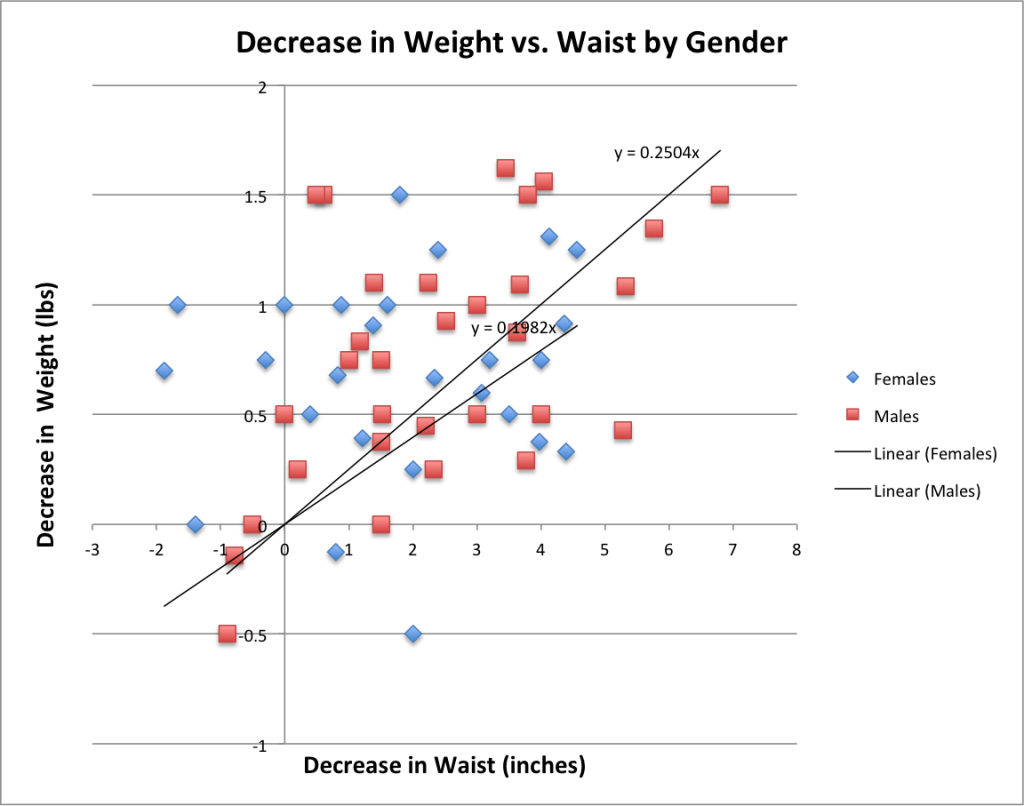
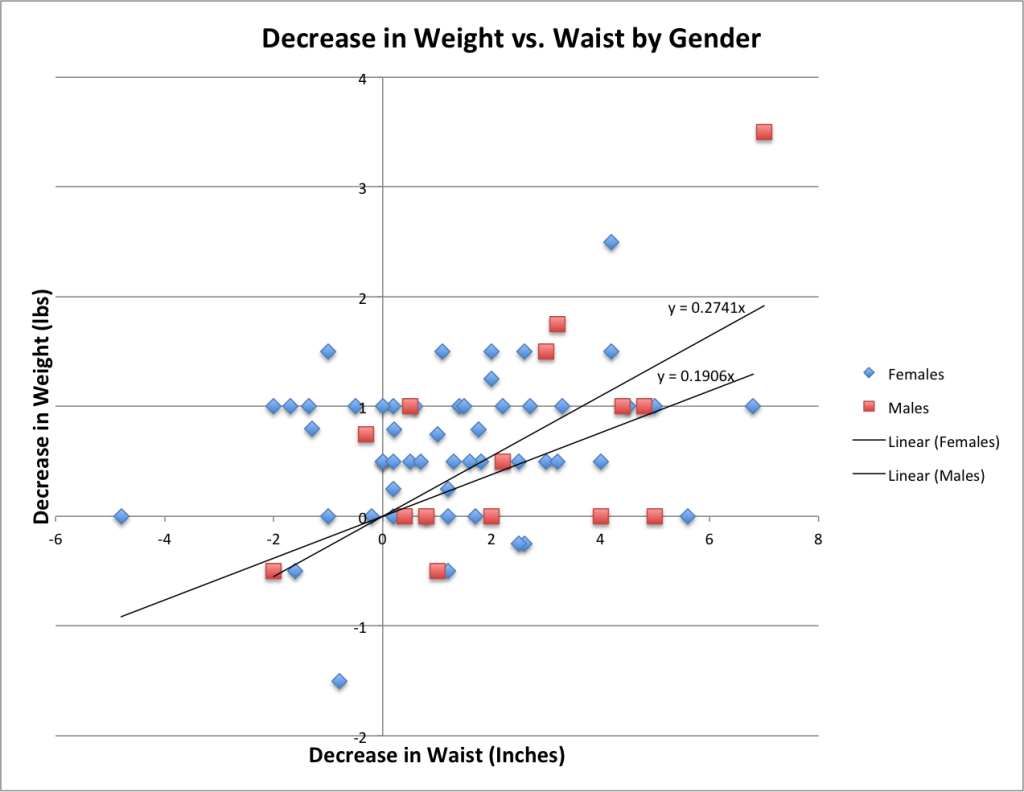


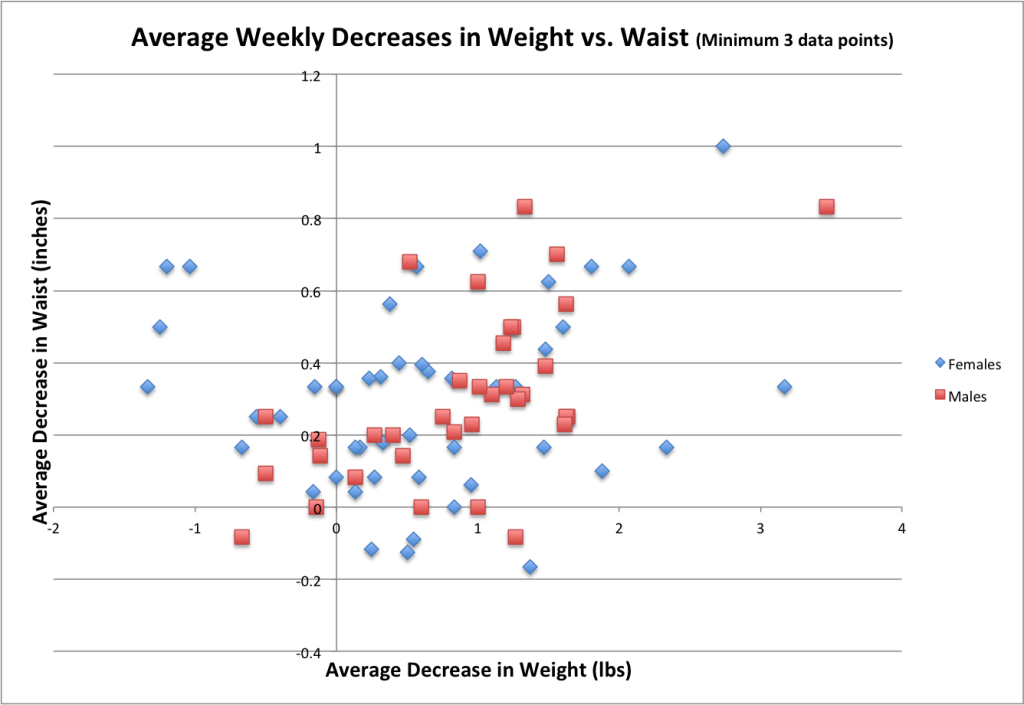
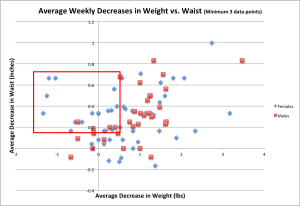
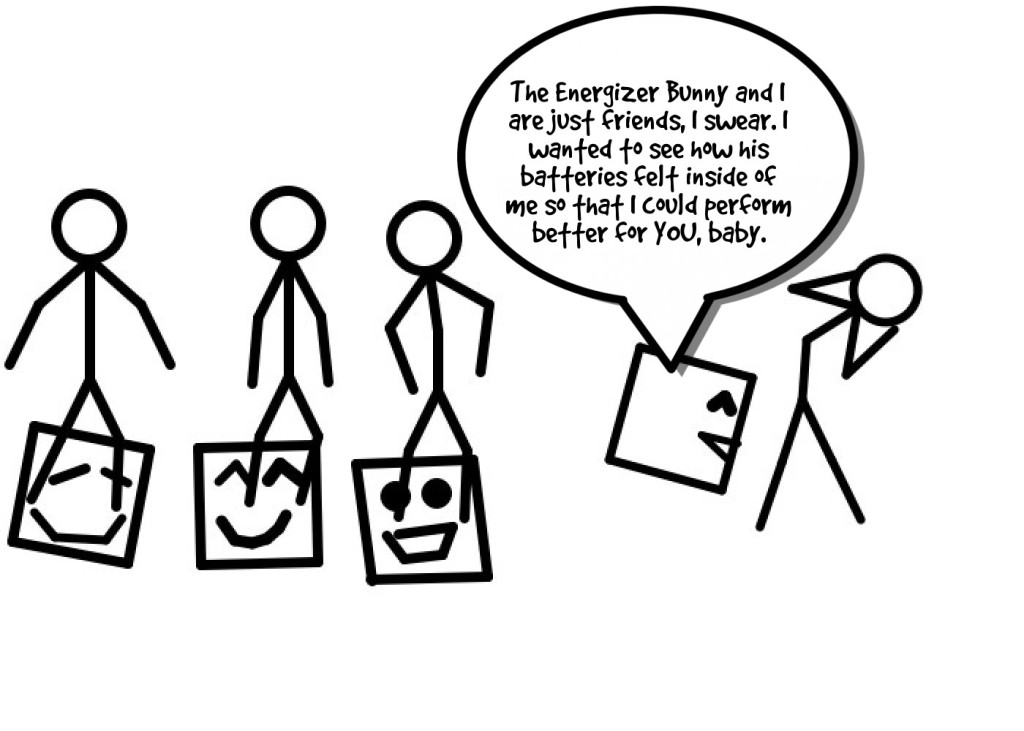

Comments are closed.